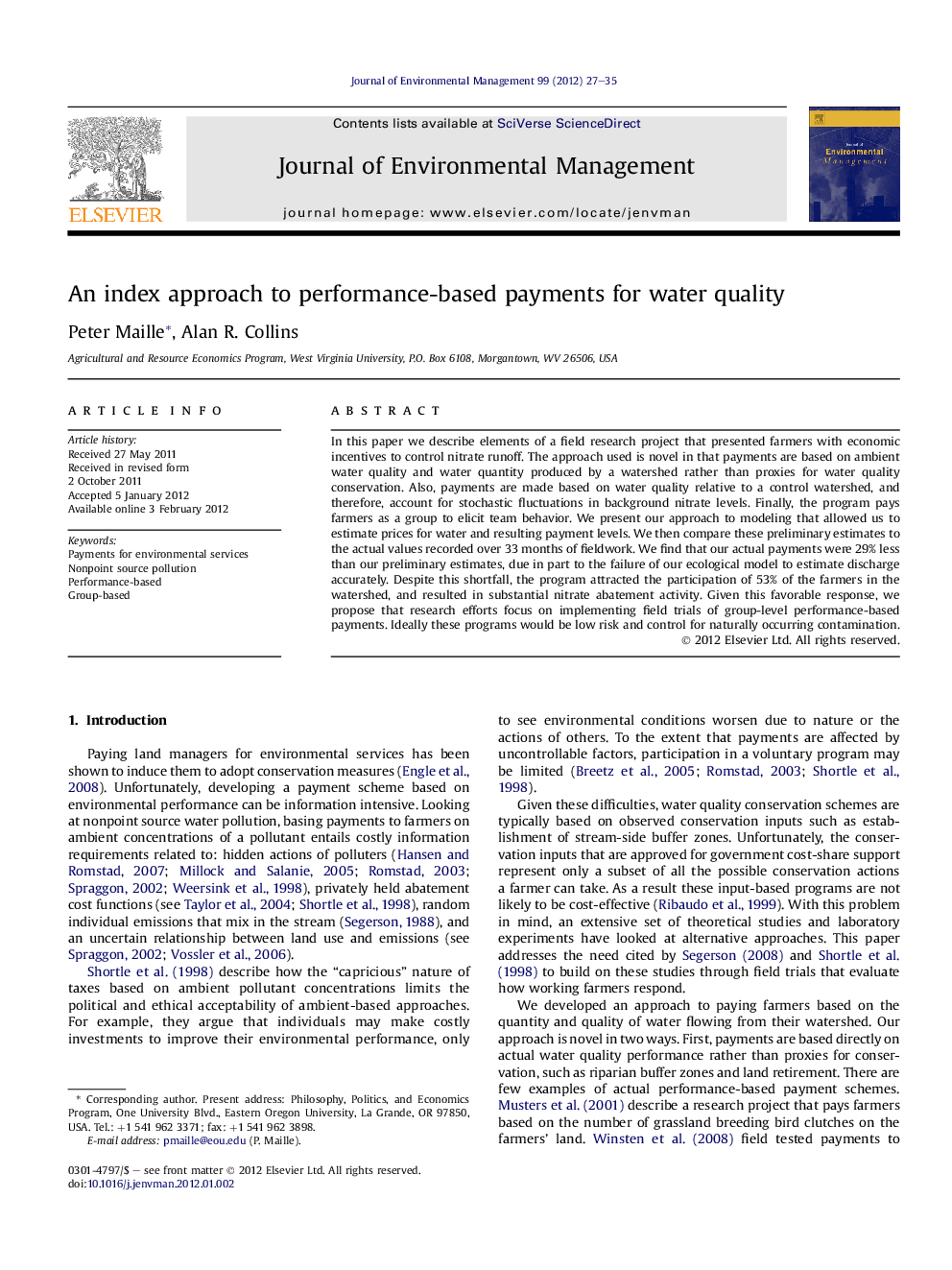| Article ID | Journal | Published Year | Pages | File Type |
|---|---|---|---|---|
| 1056901 | Journal of Environmental Management | 2012 | 9 Pages |
In this paper we describe elements of a field research project that presented farmers with economic incentives to control nitrate runoff. The approach used is novel in that payments are based on ambient water quality and water quantity produced by a watershed rather than proxies for water quality conservation. Also, payments are made based on water quality relative to a control watershed, and therefore, account for stochastic fluctuations in background nitrate levels. Finally, the program pays farmers as a group to elicit team behavior. We present our approach to modeling that allowed us to estimate prices for water and resulting payment levels. We then compare these preliminary estimates to the actual values recorded over 33 months of fieldwork. We find that our actual payments were 29% less than our preliminary estimates, due in part to the failure of our ecological model to estimate discharge accurately. Despite this shortfall, the program attracted the participation of 53% of the farmers in the watershed, and resulted in substantial nitrate abatement activity. Given this favorable response, we propose that research efforts focus on implementing field trials of group-level performance-based payments. Ideally these programs would be low risk and control for naturally occurring contamination.
► We present results of a test of performance-based payments to reduce farm runoff. ► Payments are made to a group of farmers, and control for naturally occurring nitrate. ► We explain how we estimated ex ante performance-based payments. ► We then compare these preliminary estimates with 33 months of field measurements. ► Farmer participation rate was 53%, and abatement actions were substantial.
